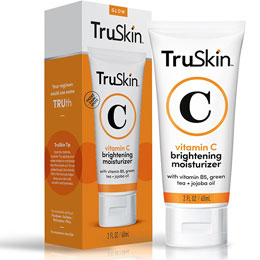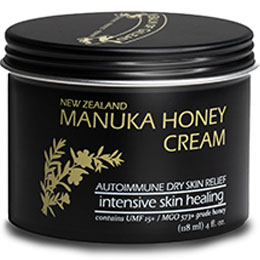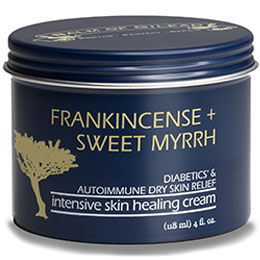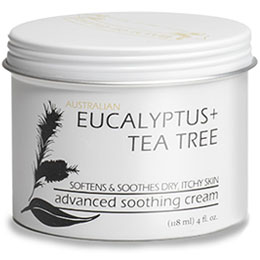How to Make Herb Infused Oils
Making your own homemade herb infused oils is such an easy thing to do but it does take a little time to do it right and get the most out of the herbs you're using.
Some people tell you how you can do the quick water bath method by warming the herbs in a jar of oil in a hot water bath for a couple of hours, I much prefer the long method.
Be sure the herbs you use are dried herbs (some health food stores carry most if not all the herbs listed below) or if you're using herbs from the garden, they are wilted to avoid any possibility of moisture remaining in the parts of the plant you are using as this can cause mold to form in the oil.
Choosing Your Herbs for Infusing Oil
When starting to make herb infused oils, first you need to decide which herbs you’re going to use and for what purpose the end result will be. Below are the herbs I've used to infuse oils for specific purposes. I've only listed the properties for which I am using them, some may have many more benefits than what is listed.
Infused Oil for Aches, Pains, and Inflammation
In my Herbal Salve I wanted to use herbs that would be helpful for inflammation, pain and to help sore muscles. My list of herbs is below with a short list of properties for each:
- White Willow – Pain, inflammation, help relieve sore muscles and joint pain.
- Horsetail – Anti-inflammatory, antibacterial, relieve dry itchy skin.
- Comfrey Root – Reduce inflammation, bruising, heals skin, sore muscles.
- St. John’s Wort – Anti-inflammatory, relieves aches and pains.
- Spearmint – Reduce swelling, muscle pain.
- Chamomile – Soothing to the skin, rashes, inflammation, anti-bacterial, muscle relaxant, helps heal wounds.
- Calendula - reduce inflammation, healing to the skin and fungal infections and other minor irritants to the skin, antimicrobial.
- Black Pepper - Black Pepper is anti-inflammatory, analgesic, and stimulates circulation. (I gave these a quick couple bursts in a coffee grinder to break them apart a little.)
I also made a batch where I added ceylon cinnamon to the oil. That added a little extra scent to the mix I found nice.
Infusing Oil with Lavender and Rose for a Comforting Girl Scent
For my Lavender/Rose Salve; I had to have the girlie salve and so glad I made it, I love it, it smells so nice and I love the way it goes on. For this I used:
- Lavender – Calming, comforting and soothing scent, helps heal minor scrapes, cuts, rashes.
- Rose – Comforting, moisturizing, soothing, dry skin, promotes healing, hydrating.
Infusing Herbs for Anti-Fungal Use
For the Anti-Fungal Salve, I wanted to create something that can help with cuts, scraps and dry skin relief.
- Horsetail - see above for properties.
- Comfrey Root - see above for properties.
- Chamomile - see above for properties.
- Calendula - reduce inflammation, healing to the skin and fungal infections and other minor irritants to the skin, antimicrobial.
- White Sage - anti-fungal, antibiotic, anti-inflammatory, and healing properties.
- Ceylon Cinnamon - anti-fungal, antibacterial, anti-inflammatory, pain relief. If the health food store doesn't have this on the shelf, you can purchase them here.
So these are just some of the herbs you can use. My choices were for inflammation and minor aches and pains, one to comfort and soothe my skin, and one still for anti-fungal purposes.
Do your research; it’s up to you how much of each herb you use.
Herb Infused Oils Using the Long Method
The long method for infusing herbs in oil is my preferred method. It takes time, but it's worth it in the end. I believe the infused oil is much nicer. So, now that you have decided which herbs you’ll be using, let’s get started.
For the most part, if you're buying your herbs from a source, you can take the herbs and put them in a jar just as they are; I use Mason Jars for this. If you're using herbs from your garden, rinse them, let them completely dry out to the point they are wilted and looking dried (you don't want any water in with your oil), and cut them in pieces into your jar.
Don’t quite fill the jar full of herbs, you want to leave a little room so the oil can completely cover and sit a little higher than the herbs. For the bulkier herbs like the pepper, I actually gave them a couple quick burst in a coffee grinder to break them up. I’m not really sure if this actually does anything more but to me it seemed like I’d get more out of them if they were broken up a bit.
Once you have the herbs in the jar, it’s time to add the oil. For this I typically use Extra Virgin Olive Oil or Almond Oil and sometimes Coconut Oil, it just depends on what I want the end results to be. Extra virgin olive oil has anti-inflammatory benefits, it moisturizes the skin, improves elasticity, and it has good fats and antioxidants to help heal the skin.
Again, do your research and decide what kind of oil you want to use, there are many kinds like almond oil, coconut oil, avocado oil and more to choose from.
Fill the jar with oil and seal with an airtight lid. Again, leave a little room at the top; you will be giving the jar a gentle shake every couple of days to move those herbs around. Depending on the herbs I'm using, I may open the container every few days and stir the contents and lightly smash the plant material. Use the end of a wooden or plastic utensil. If you do this, make sure when you to wipe around the edges of the lid and make sure there is no oil and you're getting a tight seal.
Now you’re going to place your herbs somewhere in the house where it isn’t too cold. If you live in a warm climate a warm kitchen window would be nice or the kitchen counter or a table in your office. Maybe the shelf in the closet is a good place for you, just don't forget about giving them a little shake each day.
The idea is to have them somewhere you won’t forget about them.
Leave them in the jar for 4 to 6 weeks. I know, you can’t wait - it’s really worth it in the end though. After having the herbs infusing your oil for the 4 to 6 week period - it’s time to strain the liquid.
Note: If desired, every 2 weeks you can strain the plant material, herbs, etc. and add new and fresh herbs.
For straining, I use a piece of doubled up cheesecloth large enough to be able to hold and wrap the herbs so you can squeeze all the liquid out into a bowl. If it looks like it might be necessary, you can strain your oil twice.
Now you’re ready to make the salve. The recipes for my Herbal Salve and Lavender/Rose Salve are below if you’re interested in giving it a try. Have fun making your infused oils.
Storing Your Herb Infused Oils
If you have infused oils that you've made are will not be using them right away, store them in a airtight glass container, label them with the contents and the date, and keep them in a cool dark place.
When stored properly, they can last quite a while.
Homemade Salve Recipes
Homemade Recipe Tips
- Make sure your work space and hands are clean.
- Make sure the containers you are using are clean.
- Make sure salves and creams have cooled enough before pouring in glass containers so they don't break.
- Keep the batch size small so the homemade products you use are fresh unless you're making gifts.
Infusing Herbal Oils
- Before you decide on which plant material you are going to use, I recommend you do your research on the plants or herbs you want to use.
- The infused oils I make are for topical use, I recommend you do a little test on your skin prior to using your infusion, just to make sure you don’t have a reaction, chances are pretty low that it would bother you, but you just never know especially if you have sensitive skin.
- All my infused oils have turned out great for the salves I’ve made or using them as they are or mixing with other oils and essential oils.




 Wellness Mama 5 Step Lifestyle Detox
Wellness Mama 5 Step Lifestyle Detox















